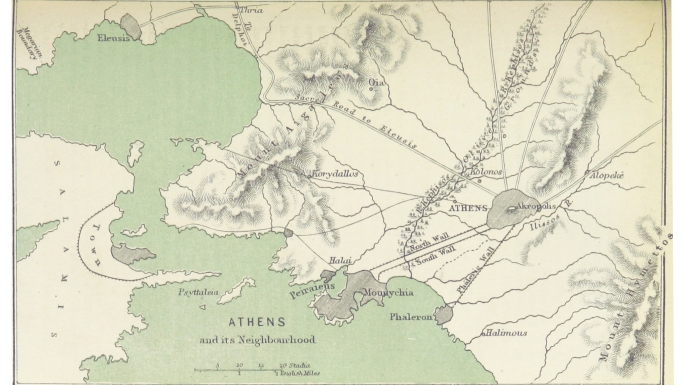Archaeologists Uncover Rare Egyptian Funerary Boat Near Pyramid
The Abusir necropolis, located between the more famous Giza and Saqqara sites in northern Egypt, is known for its pyramids, built for the Fifth-Dynasty pharaohs Sahure, Neferirkare and Neuserre (c.2465–c.2325 B.C.). But a recent expedition there by a team of Czech archaeologists turned up an exciting find from an even earlier period of Egypt’s history: a more than 60-foot-long funerary boat found buried near a mastaba (tomb) dating to the early Fourth Dynasty, circa 2550 B.C. As ancient Egyptian boat burials were usually reserved for members of the royal family, mystery surrounds the identity of the tomb’s owner. Still, archaeologists hope the well-preserved condition of the boat will shed significant light on the burial practice, as well as on the shipbuilding techniques of ancient Egypt.
The practice of burying wooden boats alongside the tombs of Egyptian royals began in the Early Dynastic Period, just after the reunification of upper and lower Egypt around 3100 B.C. Egyptologists still debate the exact significance of the boat burials. Some believe the vessels were intended as barges to carry the deceased ruler down the mighty Nile River to the afterlife. Alternatively, the boats could have been intended to provide transportation through the unknown waters of the underworld. In any case, they clearly played a crucial role in the elaborate rituals surrounding royal funerals in ancient Egypt. Some pharaohs during the Old Kingdom (Third to Sixth Dynasties) even had several boats buried alongside them as part of their pyramid complexes.
In most cases, unfortunately, not much has survived of these wooden funerary boats. Either they were dismantled back in ancient times, and the pits where they were buried were found empty, or they disintegrated, leaving the pits full of brown dust. One notable exception was found back in 1954 in the Great Pyramid built for the Fourth-Dynasty pharaoh Khufu in Giza. That vessel, which had been buried in pieces, was painstakingly reconstructed and put on display in all of its 144-foot-long glory.

Now, another funerary boat discovered buried in the sand near the Abusir necropolis is giving archaeologists hope that more such vessels may lie waiting to be found. During an excavation in 2015, a team from the Czech Institute of Egyptology uncovered the boat some 12 meters (39 feet) south of a large mastaba built of mud bricks. Despite the distance, they clearly linked the boat to the tomb due to the boat’s orientation and the pottery found inside it. Both date to around 2550 B.C., at the very end of the Third or the beginning of Fourth Dynasty.
Measuring some 62 feet long and made of wooden planks, the boat remains in surprisingly good condition after spending several millennia buried in sand. The wooden pegs holding the planks together can still be seen in their original positions, and even the battens covering the planking seams (made of plant fibers) survive, along with some of the ropes holding the boat together.
The funerary boat, and the tomb itself, does not appear to be linked to a pharaoh or other member of a royal family, as they were not buried close enough to a royal pyramid. Still, the tomb’s impressive size suggests the person buried within was a member of Egypt’s elite, with a significant connection to the reigning pharaoh. Though a stone bowl found in the tomb bears the name of King Huni, of the Third Dynasty, the identity of the tomb’s occupant remains unknown, due to the badly preserved state of the chapel area. (Interestingly, the oldest Egyptian funerary boat known to survive—a 20-foot-long vessel discovered at Abu Rawash cemetery back in 2012 and dating to around 2950 B.C.—also housed a non-royal, a high-ranking official during the First Dynasty.)
As Dr. Miroslav Barta, director of the Abusir expedition, notes in a press release: “[T]his is a highly unusual discovery since boats of such a size and construction were, during this period, reserved solely for top members of the society, who usually belonged to the royal family. This suggests the potential for additional discoveries during the next spring season.” The relatively well-preserved condition of the funerary boat found near Abusir also makes the find a particularly valuable one for Egyptologists, who will be able to see at close range how such boats were constructed. In 2016, the Czech team will join experts from the Institute of Nautical Archaeology (INA) at Texas A&M University in studying the techniques used to build the boat’s hull.







